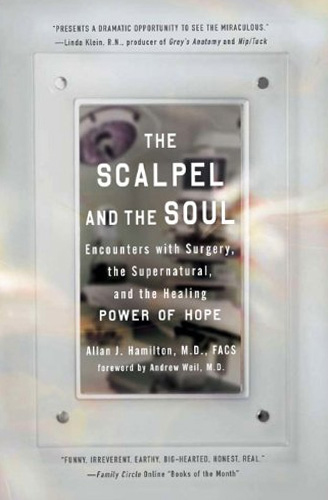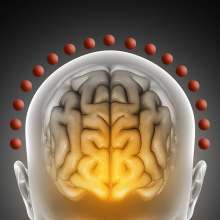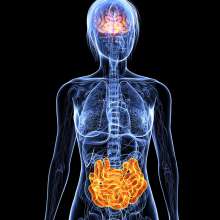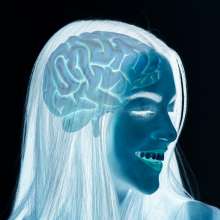 A great heart…is the sun and the moon;or rather, the sun, not the moon; for it shines bright and never changes, but keeps its course truly. – Shakespeare’s Henry V, V. 2
A great heart…is the sun and the moon;or rather, the sun, not the moon; for it shines bright and never changes, but keeps its course truly. – Shakespeare’s Henry V, V. 2
Many of Allan J Hamilton’s neurosurgery patients suffered devastating conditions such as traumatic brain injuries and malignant brain tumours. This book is a series of stories, each inspired by real patients and events.
Hamilton tells his stories in chronological order throughout his medical training and subsequent career. Even though he started as a scientist and a doctor, only trying to understand the difference between the brain and the mind, in the end, he “also had to grapple with the conundrum of the soul…to wrestle with spiritual questions and crises,” he writes.
“Every patient presents a dramatic opportunity to see the miraculous, the inexplicable, and the inspirational at work.” So the skilled surgeon and the scientist observed and related his stories of interaction between the physical and the emotional/spiritual aspects of human life in this book.
There was a spiritual reckoning. Not only did he reassess his own life, from the past to the present and from the patient’s values to his own, but he also came to an “inevitable affirmation of life beyond life, beyond death, and beyond fear”.
“It is also a series of stories about me becoming a physician,” he writes. He believes that the wisdom and insight of a trusted and respected physician are acquired not just by what was learned in medicine, but also from life experience,“our own and those of our patients”.
Many doctors and nurses working in critical care might make similar observations about the emotional or spiritual influences on sickness outcomes, and the mystery or existence of consciousness beyond the brain. But they are trained, for the most part, to disregard the unscientific and many are not comfortable talking about these observations.
So Hamilton felt that he must speak out, to tell these stories about the spiritual phenomena he witnessed.
In the second last chapter, where a remarkable and famous case of consciousness beyond the life of the brain was documented, Hamilton also raised questions: what do we in the field of medicine do with unsettling clinical incidents that cannot be explained by science?
Ignore them? Ban their discussion? He couldn’t“grasp it,or measure it, or map it…”But with or without explanation, Hamilton certainly was able to draw lessons from his observations and experiences.
“We are the only judge…we alone are empowered to make a conscious decision to envision and embrace our spirituality.”
He learned that he and his patients alike are not just physical bodies, but also mental,emotional, and spiritual beings. In order to understand health and illness, dimensions other than just the physical might need to be examined and attended to as well.
Hamilton revealed how he grew from struggling with the hopeless inevitability of suffering and the tragic certainty of death, to feeling numb about them, to accepting them as part of life, to finally going beyond accepting what cannot be changed on the outside, to making profound changes within.
This process brought him closer to the profound interconnectedness of humanity, to serenity, and to a sense of eternity.
Hamilton’s account of his life in medicine is an informative and inspirational piece to medical students at any level of training. It is also an insightful and hopeful account for the general readers.
He concludes his memoir by offering12 rules to live by, “because every illness is filled with moments of potential for the greatest positive change from within.”
“The uncertainty of severe illness, the anxiety of major surgery, and the fragility of life” help us realize that death teaches us how to live in the moment.
He refers to the Japanese warlord Katsumoto in the movie The Last Samurai, who exclaimed that the cherry blossoms were perfect as he was dying…“That is how someone, even with death on his shoulder, reminds himself of the exquisite and unbearable beauty of the present, of the very moment – even when it is his last.”
Then I came to understand. The sun’s light when rising is ever-changing. But the sun never changes. Living moments are flowing constantly. But Life is forever. Perhaps when you embrace a moment fully living in it, you can actually capture eternity with it...
About the author of this book:
After beginning his working life as a janitor, Allan J Hamilton, MD,FACS, went on to Harvard Medical School and became the Chief of Neurosurgery and Chairman of the Department of Surgery at the University of Arizona Health Sciences Center(AHSC). His career as a surgeon ended in 2004 after major reconstructive surgery on his lower spine. He is currently a professor of neurosurgery and a clinical professor in the Department of Radiation Oncology and Psychology at AHSC. He is the executive director of the Arizona Simulation Technology and Education Centre and a script consultant for Grey’s Anatomy, an ABC TV series.




